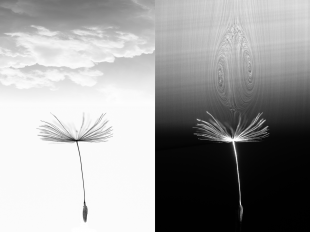If a dandelion fruit, for example, is picked up by the breeze, it can be carried over hundreds of miles. Incredibly, the filament structures of these seeds are mostly empty space, making this an extremely efficient mode of transport (Cummins et al, 2018). Moreover, the fruit can become more or less streamlined depending on the environmental conditions; in this way, they behave as a smart technology (Seale et al 2018). We are uncovering the novel engineering principles of these fruit using a combination of numerical, analytical, and physical modelling. Our group has built a first-of-its-kind vertical wind tunnel, which we use alongside particle image velocimetry and high-speed imaging to visualise and measure the flow around these fruit when falling in quiescent flow, as well as in gusty wind.
Flagship Project
Find out more about our flagship project funded by the European Research Council,
Dandidrone: A Dandelion-Inspired Drone for Swarm Sensing.



